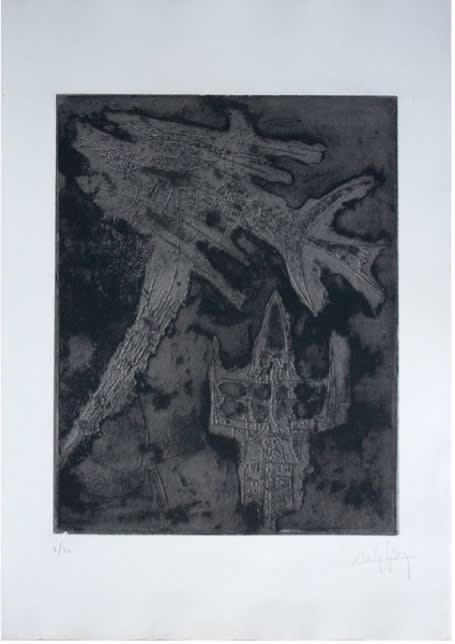Wifredo Lam (1902–1982) occupies a pivotal position within 20th-century modernism, synthesising European avant-garde strategies with Afro-Cuban visual and spiritual traditions. Born in Sagua La Grande to a Chinese father and a mother of Spanish and African descent, Lam embodied the hybrid cultural genealogy that would later underpin his artistic project. In the first half of the century, Cuban art rarely acknowledged its African heritage; Lam’s work sought to confront this omission directly, particularly its erasure within the realm of spiritual practice.
After nearly two decades in Europe — including formative encounters with Pablo Picasso, Joan Miró, and André Breton — Lam returned to Cuba in 1941. Encouraged by Picasso to engage critically with his origins, Lam’s practice began to merge Cubist structure and Surrealist automatism with iconographies derived from Santería, Yoruba cosmology, and the visual language of African sculpture. His compositions, populated by hybrid figures and mask-like visages, function as both allegories of postcolonial Cuba and as interventions into the Eurocentric canon of modern art.
Lam’s trajectory reflects the global dislocations of his era: military service on the Republican side during the Spanish Civil War, exile during World War II, and later alignment with the Cuban Revolution. His visual vocabulary articulates a double consciousness — simultaneously rooted in the specificity of Afro-Cuban identity and open to universal narratives of displacement, hybridity, and resistance.
Lam’s work can be interpreted as a strategic act of cultural reclamation, reframing modernist painting through the prism of Afro-diasporic knowledge systems. Today, his oeuvre is recognised for its capacity to destabilise categorical boundaries between modernism and so-called “primitive” art, situating Lam as a key interlocutor in a transnational history of modernism. His legacy continues to challenge prevailing narratives about the origins and scope of modern art in the 20th century.







